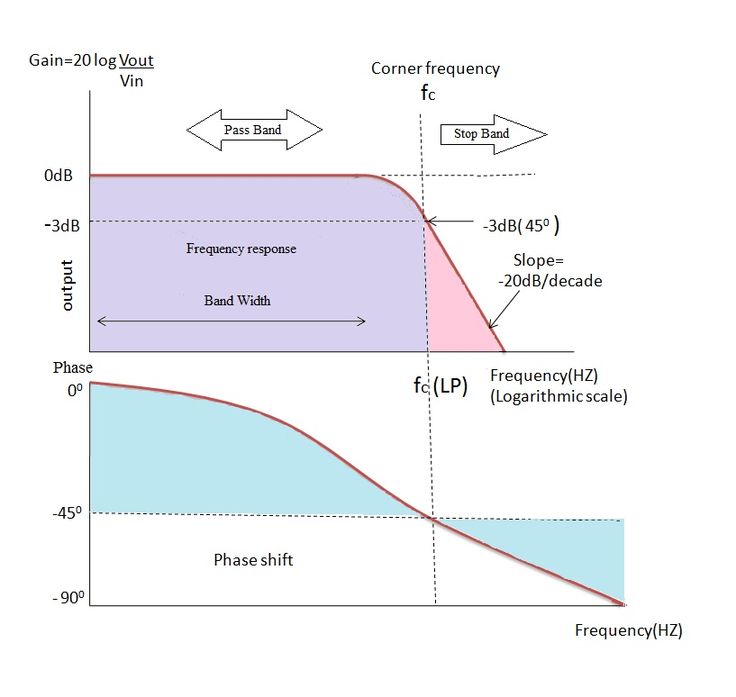Second Order High Pass Filter

Second order high pass filter
➢ Second Order Filters are also referred to as VCVS filters, because the op-amp is used as a Voltage Controlled Voltage Source amplifier, are another important type of active filter design because along with the active first order RC filters , higher order filter circuits can be designed using the Operation Amplifier.
Why are second order filters better?
2nd order active filtering has two main advantages: High impedance input, low impedance output. greater attenuation at high range (-40dB/decade as opposed to -20dB/decade for RC filter)
What is second order active low pass filter?
A Second Order Low Pass Filter is to be design around a non-inverting op-amp with equal resistor and capacitor values in its cut-off frequency determining circuit. If the filters characteristics are given as: Q = 5, and ƒc = 159Hz, design a suitable low pass filter and draw its frequency response.
What is the gain roll rate for second order high pass filter?
The frequency response of the second order high pass filter is identical to that of the first order type except that the stop band roll-off will be twice the first order filters at 40 dB / Decade.
What is second order high pass Butterworth filter?
Second Order High Pass Butterworth Filters: The second order high pass Butterworth filters produces a gain roll off at the rate of + 40 dB/decade in the stop band. This filter also can be realized by interchanging the positions of resistors and capacitors in a second order low pass Butterworth filters.
What is the difference between first-order and second order reaction?
A first-order reaction rate depends on the concentration of one of the reactants. A second-order reaction rate is proportional to the square of the concentration of a reactant or the product of the concentration of two reactants.
What are the advantages of high pass filter?
Whenever there is a small signal is present, an active High pass Filter is used to increase the amplification factor, which also increases the amplitude of those small signals. Due to very high input impedance, active high pass filters can transfer efficient signals without any loss in any preceding circuit.
Why Butterworth filter is best?
Butterworth filters have a maximally-flat response in the passband; that is, passband flatness is the ideal filter characteristic emphasized, but it is achieved at the expense of phase linearity and of steepness of attenuation slope.
Why is Butterworth filter better?
In addition to the flat passband response, the selectivity of the Butterworth filter is better than many other filter typologies such as the Bessel or Gaussian. The flip-side of this improved selectivity is greater delay and poorer phase linearity.
What is first order high pass filter?
As mentioned earlier, a high pass filter is a circuit that attenuates all the signals below a specified cut off frequency denoted as fL. Thus, a high pass filter performs the opposite function to that of low pass filter.
What is high order low pass filter?
1.4 Higher-Order Low-Pass Filters. High-order filters are used because they have the ability to roll off gain after the bandwidth at a sharper rate than low-order filters. The attenuation of a filter above the bandwidth grows proportionally to the number of poles.
What is first order high pass Butterworth filter?
First order High Pass Butterworth Filter The high pass filter is obtained by changing frequency determining component – resistors and capacitors in the low pass filter. The first order high pass filter is obtained by interchanging R and C in the first order low pass filter.
What is roll of rate of first and second order filter?
Rating. Unlock Full Solution (Free) The frequency response of the second-order low pass filter is identical to that of the first-order type except that the stop band roll-off will be twice the first-order filters at 40 dB/decade (12 dB/octave).
How do you calculate high pass filter?
The operation is same as that of the passive high pass filter, but the input signal is amplified by the amplifier at the output. The amount of amplification depends on the gain of the amplifier. The magnitude of the pass band gain is equal to 1 + (R3/R2).
How is high pass filter calculated?
The cut-off frequency, corner frequency or -3dB point of a high pass filter can be found using the standard formula of: ƒc = 1/(2πRC).
Is Butterworth a high pass filter?
In the field of Image Processing, Butterworth Highpass Filter (BHPF) is used for image sharpening in the frequency domain. Image Sharpening is a technique to enhance the fine details and highlight the edges in a digital image. It removes low-frequency components from an image and preserves high-frequency components.
Is Butterworth filter active or passive?
A Butterworth Filter is a type of Active Filter, where the frequency response of the across its pass band is relatively flat. Because of this frequenct response, Butterworth Filters are also known as Maximally Flat Filters or Flat-Flat Filters.
Which is example for second-order?
Examples of Second-Order Reactions Here, an example of the hydrolysis of an ester in the presence of a base, ethyl acetate in the presence of sodium hydroxide. These reactions involve one second order reactant yielding the product. In the gas phase, nitrosyl bromide decomposes into nitrogen oxide and bromine gas.
What is meant by second-order?
second-order (not comparable) (mathematics, logic) Denoting the second in a numerical sequence of models, languages, relationships, forms of logical discourse etc. Of secondary importance. quotations ▼
How do you know if its first order or second-order?
You must know that if doubling the concentration of a reactant causes the rate to double, then that reactant is of the first order. In this case, both reactants are first order. The sum of two first order reactants is a second order reaction.











Post a Comment for "Second Order High Pass Filter"